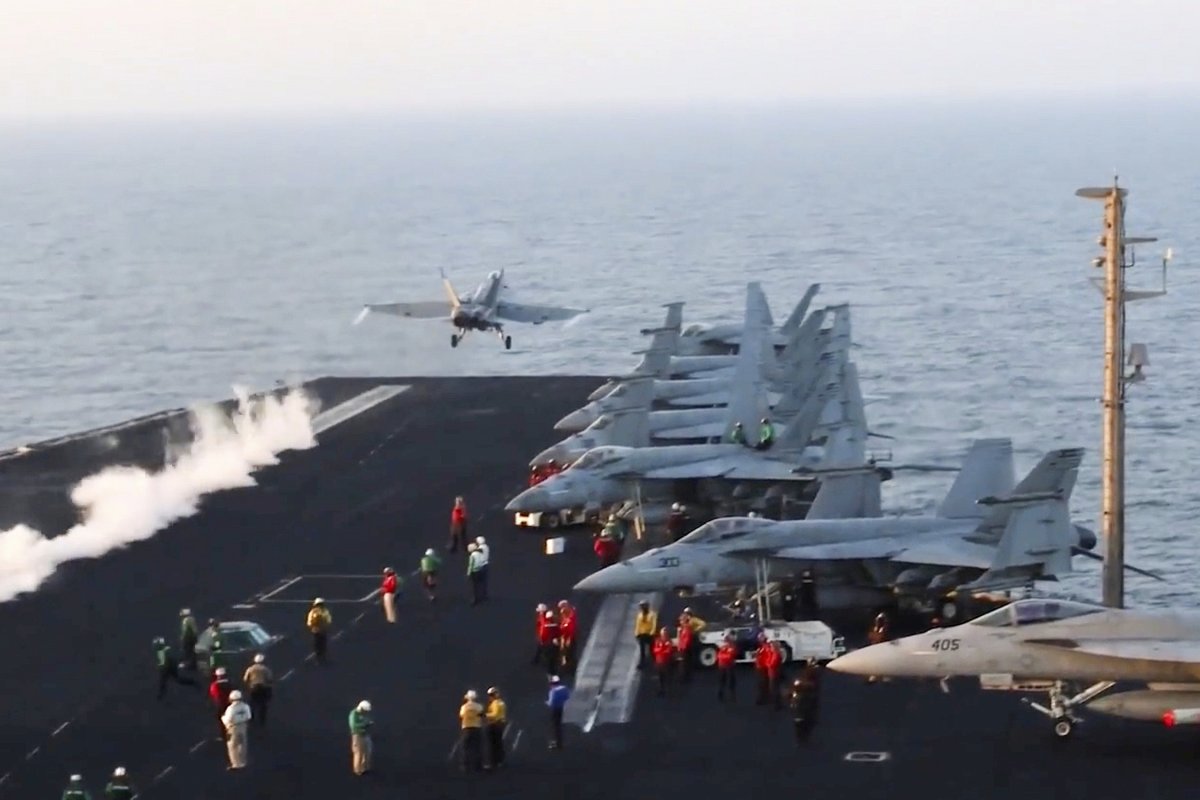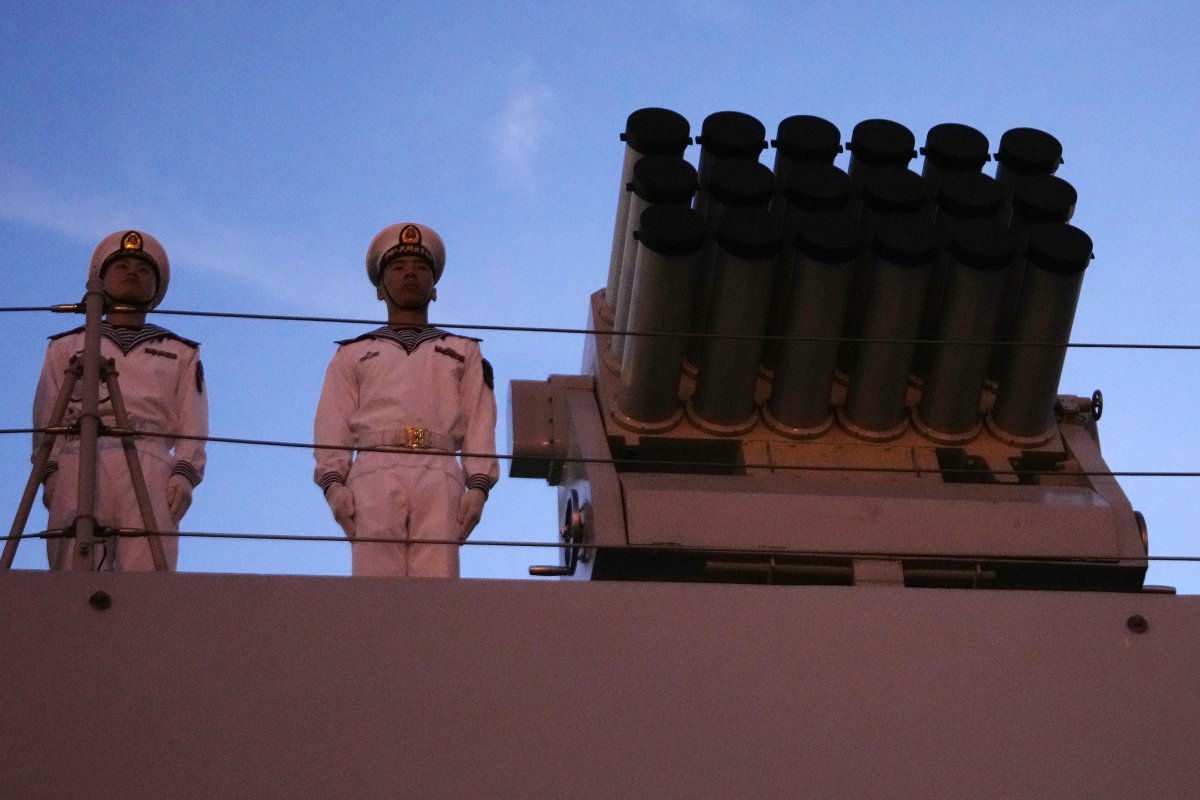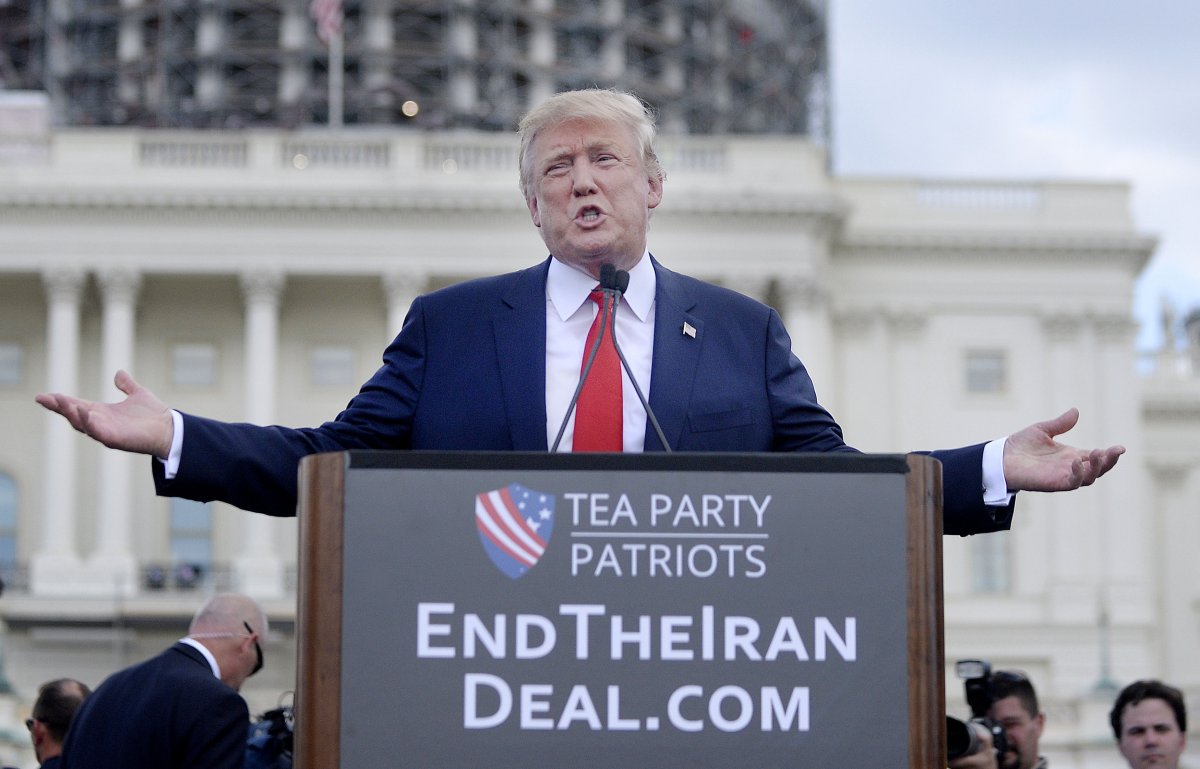The growing tensions between the United States and Iran have sparked fears of a potential military conflict. Signs indicate that both nations are preparing for a major confrontation with military build-ups, strikes, economic sanctions, shows of military force and diplomatic breakdowns.
Newsweek has reached out the State Department and Iran’s foreign ministry for comment.
Why It Matters
The U.S. has long been concerned about Tehran’s nuclear ambitions, viewing them as a threat to regional and global security. In 2018, President Donald Trump withdrew from the Joint Comprehensive Plan of Action (JCPOA), the Iran nuclear deal, citing Tehran’s alleged failure to comply. This has led to severe economic sanctions on Iran. Despite these pressures, Iran has ramped up its activities, saying that its nuclear program is for civilian purposes only. However, as diplomatic efforts for a new nuclear deal falter, the situation becomes increasingly volatile.

Kyodo/AP Photo
Here are five signs that point to a looming conflict between the U.S. and Iran:
1. Military Buildup
The U.S. has significantly increased its military presence in both the Persian Gulf and Indian Ocean, deploying B-2 stealth bombers, cargo planes, and aerial refueling tankers, alongside key assets like the USS Carl Vinson and USS Harry S. Truman aircraft carriers.
These moves signal heightened U.S. preparations. In response, Iran has bolstered its missile capabilities, positioning advanced air defense systems around the Strait of Hormuz, while ramping up military activities in the region.
2. U.S.-Israeli Operations and Iranian Proxies
The U.S. and Israel have both escalated their military operations in the region. In Gaza, Israel’s ongoing airstrikes on Hamas targets have drawn broader regional involvement, with Iran’s support for militant groups adding a layer of complexity to the conflict.
Iran’s support for various proxies in the Middle East, including Hamas, Hezbollah, and militia groups in Iraq and Syria, has been a consistent point of contention. The U.S. has recently stepped up attacks on the Yemen-based Houthis, which are backed by Iran.

U.S. Navy/AP Photo
3. Sanctions and “Maximum Pressure”
Economic sanctions have played a pivotal role in the U.S.-Iran standoff. Following Trump’s withdrawal from the JCPOA, the U.S. imposed stringent sanctions on Iran’s oil exports, banking system, and military industry, aiming to cripple its economy and force Iran to comply with nuclear restrictions.
These sanctions have led to a severe economic downturn in Iran, but they have failed to bring Tehran to the negotiating table. Instead, Iran has continued its nuclear activities, including the enrichment of uranium and missile development. The reimposition of Trump’s “maximum pressure” policy, has only heightened tensions, leading to an increasing likelihood of military action if Iran does not alter its course.
4. Demonstrations of Military Might
Both the U.S. and Iran have engaged in significant military posturing. The U.S. has conducted multiple B-52 bomber flyovers near Iran as a show of strength and to signal potential military action. Additionally, U.S. forces have joined with Israel in large-scale drills involving strategic bombers and fighter jets.
On the other side, Iran has conducted joint naval exercises with Russia and China in the Gulf, further bolstering its military capabilities. Iran has also showcased its missile strength by unveiling “missile cities”, which house its growing arsenal of long-range missiles, and conducting missile tests. These military displays serve as a warning to the U.S. and its allies.

More
Vahid Salemi/AP Photo
5. Letters and Diplomatic Deadlines
Diplomatic relations between the U.S. and Iran have deteriorated since the U.S. pulled out of the nuclear deal in 2018. Despite some attempts at renegotiation, Tehran has rejected U.S. demands and has increasingly turned to Moscow and Beijing for support.
Recently, President Trump revealed that he had sent a letter to Tehran, demanding a new nuclear agreement within two months or face significant military consequences. With negotiations stalled and the deadline looming, the diplomatic window for de-escalation is quickly closing, leaving military action as an increasingly likely outcome.
What People Are Saying
Negar Mortazavi, Senior Fellow at the Center for International Policy and host of The Iran Podcast told Newsweek: “The current trajectory of US and Iran relations is leading to possible conflict but it doesn’t have to be this way. Both sides seem to have the intention of engaging in diplomacy. President Trump has shown interested in negotiations and Iranians have also responded with the same interest. But Trump’s “maximum pressure” policy of peace through strength won’t work with Tehran. Iranians showed in Trump’s first term that “maximum pressure” leads to maximum resistance from Iran. Both sides need to streamline their approaches and try to meet somewhere in the middle.”

Olivier Douliery/AP Photo
What Happens Next
As military forces build up on both sides and sanctions continue to bite, the risk of direct military confrontation between the U.S. and Iran grows.
With Israel’s ongoing military operations in Gaza, Iranian proxy involvement in the region, and the looming deadline for diplomatic talks, the next few months will be crucial in determining whether the two countries can find a way to resolve their differences or whether they will be pushed toward all-out conflict.


